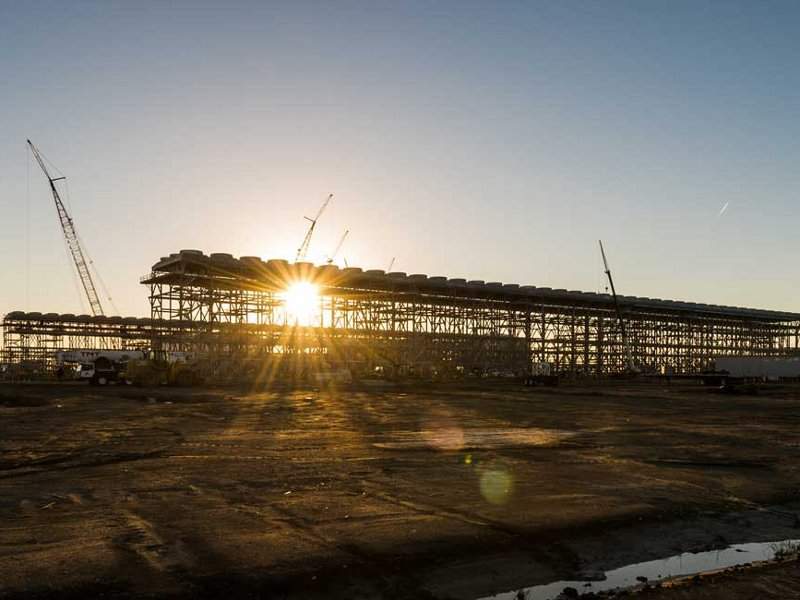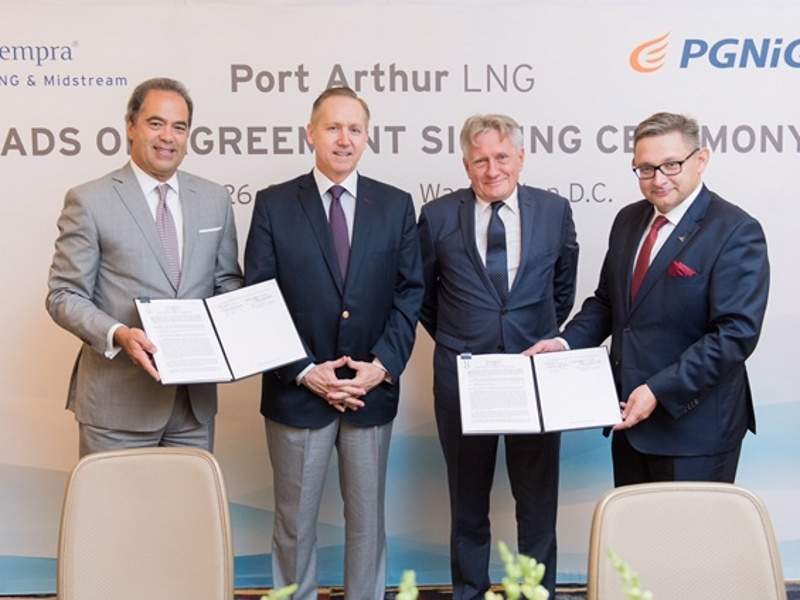Sempra LNG & Midstream, a wholly-owned subsidiary of Sempra Energy, plans to build the Port Arthur LNG terminal on 2,842 acres of land in Jefferson County, Texas, US.
The liquefied natural gas (LNG) processing and export facility will receive up to two billion cubic feet of feed gas a day (bcf/d) from multiple interstate and intrastate pipelines via two new gas pipelines to be built and owned by Port Arthur Pipeline, another subsidiary of Sempra LNG & Midstream.
With two natural gas liquefaction trains, the LNG facility will produce up to 11Mt of LNG a year for export. It will have direct access to the Gulf of Mexico.
The US Federal Energy Regulatory Commission (FERC) permitted the construction and operation of Port Arthur LNG export facility in April 2019. A final investment decision (FID) on the project is expected in 2020, while commissioning is expected by 2023.
Port Arthur is one of the three LNG terminal projects being undertaken by Sempra Energy in North America. The other two projects are the Cameron LNG terminal in Louisiana, US, and the Energia Costa Azul LNG project in Mexico.
Port Arthur LNG project development
Sempra LNG & Mainstream received approval from the US Department of Energy (DoE) to export domestically produced gas to countries that are part of Free Trade Agreement (FTA), in August 2015.
The company filed an application with Federal Energy Regulatory Commission (FERC) seeking authorisation to construct and operate the LNG terminal, in November 2016.
Woodside Energy, a subsidiary of Woodside Petroleum, signed the Project Development Agreement (PDA) for Port Arthur LNG with Sempra LNG & Mainstream in February 2016.
Further, Woodside Energy and Sempra Energy signed a memorandum of understanding (MoU) with Korean Gas Corporation (KOGAS) for the development of the LNG Terminal, in June 2017. KOGAS is the potential purchaser and equity participant in the project.
The Port Arthur LNG project received the DOE authorisation to export LNG to the countries that don’t have FTA with the US, in May 2019.
Saudi Aramco, through its subsidiary Aramco Services Company, entered a heads of agreement (HOA) with Sempra LNG for a long-term LNG sales and purchase agreement along with a 25% equity stake in the phase one of Port Arthur LNG project, in May 2019.
Sempra LNG and Aramco Services signed an interim project participation agreement (IPPA) for the LNG export project in January 2020.
Preparatory works for the terminal construction were started with the groundbreaking ceremony for the relocation and upgrade of approximately 5.6km of State Highway 87 in November 2019.
Sales agreement for Port Arthur LNG terminal
Polish Oil & Gas Company (PGNiG) signed a 20-year fixed sales and purchase agreement to offtake 2Mt of LNG a year from the Port Arthur LNG terminal, in December 2018.
Aramco Services Company signed an HOA to off-take 5Mtpa of LNG from the facility for 20 years, in May 2019.
Port Arthur LNG plant details
Port Arthur LNG facility will comprise two liquefaction trains with a combined production capacity of up to 11Mt of liquefied gas a year, and three LNG storage tanks with a storage capacity of 160,000m³ each.
Other facilities of the terminal will include marine facilities for LNG vessel berthing and loading, natural gas liquids and refrigerant storage facility, feed-gas pre-treatment facility, combustion turbine generators for in-situ power generation, and truck loading and unloading areas.
Details of Port Arthur gas pipeline
The feed gas for the Port Arthur LNG facility will be supplied through two new pipelines namely, Texas Connector and Louisiana Connector.
The 55km-long Texas Connector and the 211km-long Louisiana Connector pipelines, both of 42in diameter, will connect multiple interstate and intrastate pipelines to the north and south of the LNG facility.
The Texas Connector will have two compressor stations, while the Louisiana Connector will have only one compressor station at Allen Parish. Each compressor station will consist of four 22,500HP gas turbines.
Contractors involved
Bechtel was selected as the engineering, procurement, construction, and commissioning (EPCC) contractor for the Port Arthur LNG terminal in June 2018.





